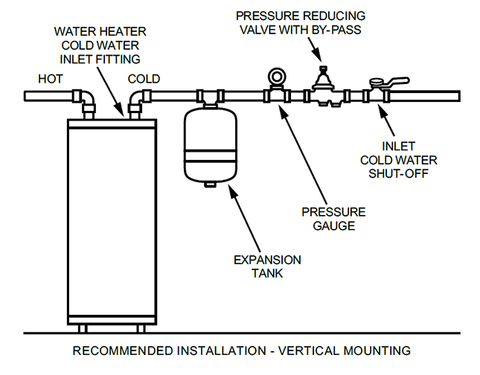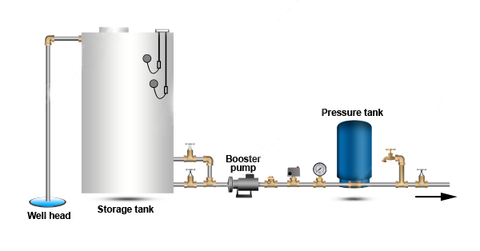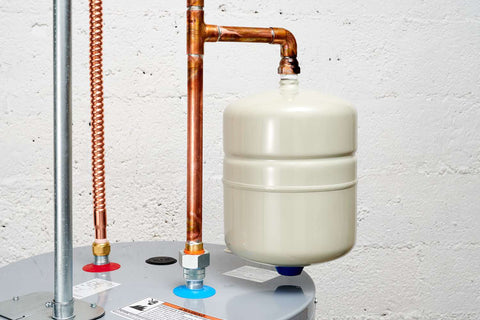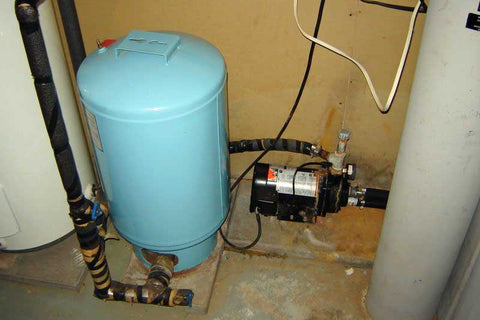It’s easy to confuse pressure tanks and expansion tanks. But these two tanks perform unique functions. The most significant difference between pressure and expansion tanks is where they’re located in a system. Expansion tanks are installed above a water heater to protect it when hot water expands. Pressure tanks are installed near a pump to protect and extend its lifespan.
What is an Expansion Tank?
An expansion tank looks like a small metal container resembling a propane tank and is installed directly above a water heater on the cold water inlet. Its main job is to help contain the water pressure from water expansion when heated. There are several different types of expansion tanks, including bladder tanks and diaphragm tanks.

Read more about the differences between bladder and diaphragm expansion tanks in our blog post Bladder Tanks vs. Diaphragm Tanks.
Shop Bell & Gossett Expansion Tanks
Shop Armstrong Expansion Tanks
What is a Pressure Tank?
A pressure tank is a fiberglass or metallic vessel connected to a plumbing system that controls water pressure. It helps maintain the water pressure level and provides a steady flow of water when the pump is off. A pressure tank holds water sourced from a well and delivers it at the correct pressure. It also contains compressed air, which exerts force on the water. A water pump would keep turning on and off without a pressure tank. This would cause cycling problems and shorten the pump’s lifespan.

Differences Between Expansion & Pressure Tanks
Function
An expansion tank holds the steam and excess water created by heating, preventing it from over-pressurizing the system. A pressure tank acts as a reservoir, storing water to be pumped through the system at the correct pressure.
Installation Location
Pressure tanks are installed near the water pump, while expansion tanks are installed above a water heater.
Durability
Typically, expansion tanks last longer than pressure tanks. On average, an expansion vessel lasts between 6 to 10 years with proper maintenance, thanks to the robust and sturdy material and design. In contrast, pressure tanks last between 5 to 7 years, during which the tank will require little to no maintenance.

Expansion & Pressure Tanks FAQs
Do I need an expansion tank if I have a pressure tank?
Yes, since they provide a different function, an expansion tank is recommended if you have a closed-loop system with any check valve or pressure regulating valve installed on the water supply line.
Do expansion tanks increase water pressure?
No, expansion tanks do not increase water pressure. They handle thermal expansion from the heating process and reduce excessive water pressure. This process helps safeguard your plumbing system from damage by thermal expansion.
What can I use instead of an expansion tank?
Thermal expansion relief valves are an alternative to expansion tanks. Thermal expansion relief valves are typically a combination ball valve with a low-pressure, spring-loaded safety valve installed in the same place as an expansion tank. However, rather than store any excess steam or moisture, thermal expansion relief valves open and close to relieve water pressure.
Read more in our blog post Thermal Expansion Relief Valves vs. Expansion Tanks.
Can a pressure tank be used as an expansion tank?
Despite their similarities, pressure tanks and expansion tanks are not interchangeable.


